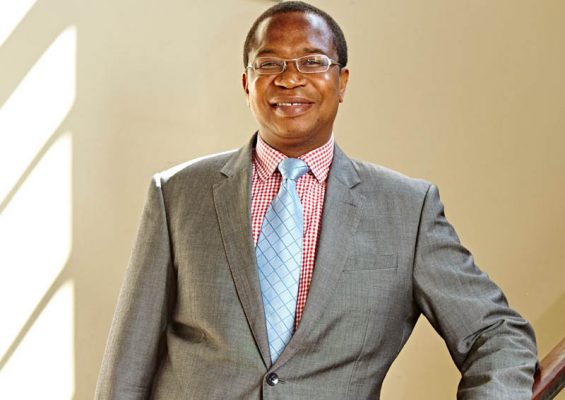Kuvimba Mining House has paid out US$5.2 million in dividends to shareholders, less than a year after bringing some of the country’s biggest mining assets under its wing with government support.
From white former farmers, the insurance regulator, and Government, the shareholders that lined up to receive their dividend cheques on Wednesday represent a broad range of interests, in a display of the company’s growing influence on the economy.
Kuvimba owns key mines such as Bindura Nickel Corporation, the country’s nickel producer, Freda Rebecca, Zimbabwe’s biggest gold miner, Shamva Mine, as well as an interest in Great Dyke Investments, potentially the country’s largest platinum operation.
Last year, Kuvimba also started running State-owned mines Jena, Elvington and Sandawana, after ZMDC ceded control. Kuvimba has also recently taken over Homestake, which runs the mothballed Tiger Reef Mine and Globe & Phoenix tributes in the Midlands.
Government last year announced that 65% of the company was now in its hands and those of other local interests. The remaining 35% is held by a private investor. The company is Sotic International, the Mauritius-registered company through which Kuvimba acquired BNC and other assets.
Which local shareholders are involved and how they are sharing this maiden dividend?
Government stake
The Government of Zimbabwe holds 21.5% equity in Kuvimba. Its share of the dividend is US$1.72 million. Government is the largest of the local shareholders.
White farmers compensation fund
12.5% of is held by a special compensation fund for white former farmers. The fund is raising money to pay white farmers as agreed last year under the Global Compensation Agreement, the US$3.5 billion deal signed between the Government and displaced white farmers in 2020.
According to Andy Pascoe, president of the Commercial Farmers Union, farmers had raised doubts about the shareholding in “unknown ventures, unknown proceeds”. But he said they take the dividend as a “seed”.
National Venture Fund
7.5% of Kuvimba is held by the National Venture Fund. The fund was set up to support businesses owned by women, youths and war veterans. Of the 7.5% held by the fund 2.5% is meant to support youth-run startups; 2.5% for women’s projects and 2.5% for war veterans. Last week, government launched a new investment company for war veterans, the War Veterans Investment Corporation.
Insurance and pensions
5% of Kuvimba is held by the Insurance and Pensions Commission (IPEC). The insurance regulator will use its share to compensate pensioners who lost value to the 2019 currency changes.
In the 2021 budget, government set aside US$75 million for this compensation. IPEC was initially sceptical of government’s plan to pay this via Kuvimba shares, says the regulator’s commissioner, Grace Muradzikwa.
“On further engagements with government, we were advised that resources were in the form of shares in a ‘good asset’. To be honest, we received the message with mixed feelings since we were not sure of the performance of the company and its dividend payment history,” she says.
But, Muradzikwa said, the early dividend may justify the decision.
Depositors
The Deposit Protection Corporation holds 5%. The DPC is meant to compensate small bank depositors for loss of value on savings.
Public service
7% of shares in Kuvimba are held by the Public Service Pension Management Fund, which manages pensions for government workers.
6.5% shareholding is held by the Sovereign Wealth Fund of Zimbabwe. A sovereign wealth fund is a government’s investment fund, usually funded by money generated by the government.
There was no disclosure on exactly the number of shares each entity holds in Kuvimba, the dividend payable per share, or the payout to the 35% shareholder.

Future dividends? Not so much
Kuvimba CEO David Brown, however, cautioned that Kuvimba may not be as generous as it has been, as it reinvests earnings back into the company.
“The dividend that we are declaring today, is being calculated with regard to preliminary consolidated results of the group. But I think we must bear in mind that future dividends will always have to be managed as a balancing act between reinvestment into the business in order for it to grow, as well as rewarding shareholders,” Brown says.
The company’s expansion plan suggests a large capex outlay will be needed.
BNC completed shaft deepening in April, a project that first started in 2003 but had been abandoned for lack of funding. The deeper shaft will extend the life of mine and cut costs.
At Freda Rebecca, the company says it has broken a 20-year production record this year. Over the past decade, the mine averaged between 1,500kg and 2,100kg annual gold output. In the year to March this year, production rose to 2,690kg, and the company targets 3,215kg this year.
The mine reaches the end of its life in five years, and the company is exploring resources to find the next location for the next mine to replace Freda Rebecca.
At Shamva, Kuvimba plans to start construction of a new mine in early 2022 after completion of a detailed feasibility study and raising capital to exploit resources at Shamva Hill.
Says Brown: “Once fully developed, Shamva has the potential to become the largest gold mine in Zimbabwe by output and will target an annual production of 3,500kg of gold per annum.”
This would be a big turnaround for Shamva, formerly owned by Metallon. The mine had been shut down in 2019 and was sold to Kuvimba last year.




